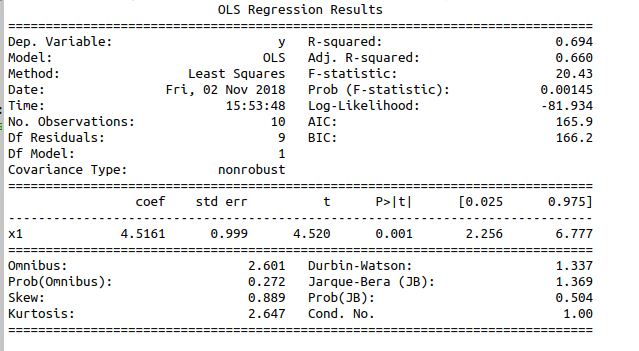To take the summary of linear regression model for the given data set using python.
Import necessary libraries.
Load the sample data set.
Assign the independent(X)and dependent(y)variables.
Pass the variables to the model.
In sklearn library,dont have method like summary()
#import related libraries
import pandas as pd
#import stats model
import statsmodels.api as sm
#load sample data
data={‘salary’:[100,200,300,
400,500,400,300,200,100,50],
‘age’:[25,26,25,23,30,29,23,23,25,25],
‘rating’:[4,3.24,2.5,2.25,2,2.25,2.5,
2.75,3.2,4.2], ‘bonus’:[2500,1200,900
,3000,1800,1400,850,250,750,1000]}
#create data frame
df=pd.DataFrame(data)
#assign independent variable
X = df.iloc[:, :1].values
#assign dependent variable
y = df.iloc[:, 3].values
#build regression model
model=sm.OLS(y,X).fit()
#take summary of model
result=model.summary()
#print the result
print(result)
